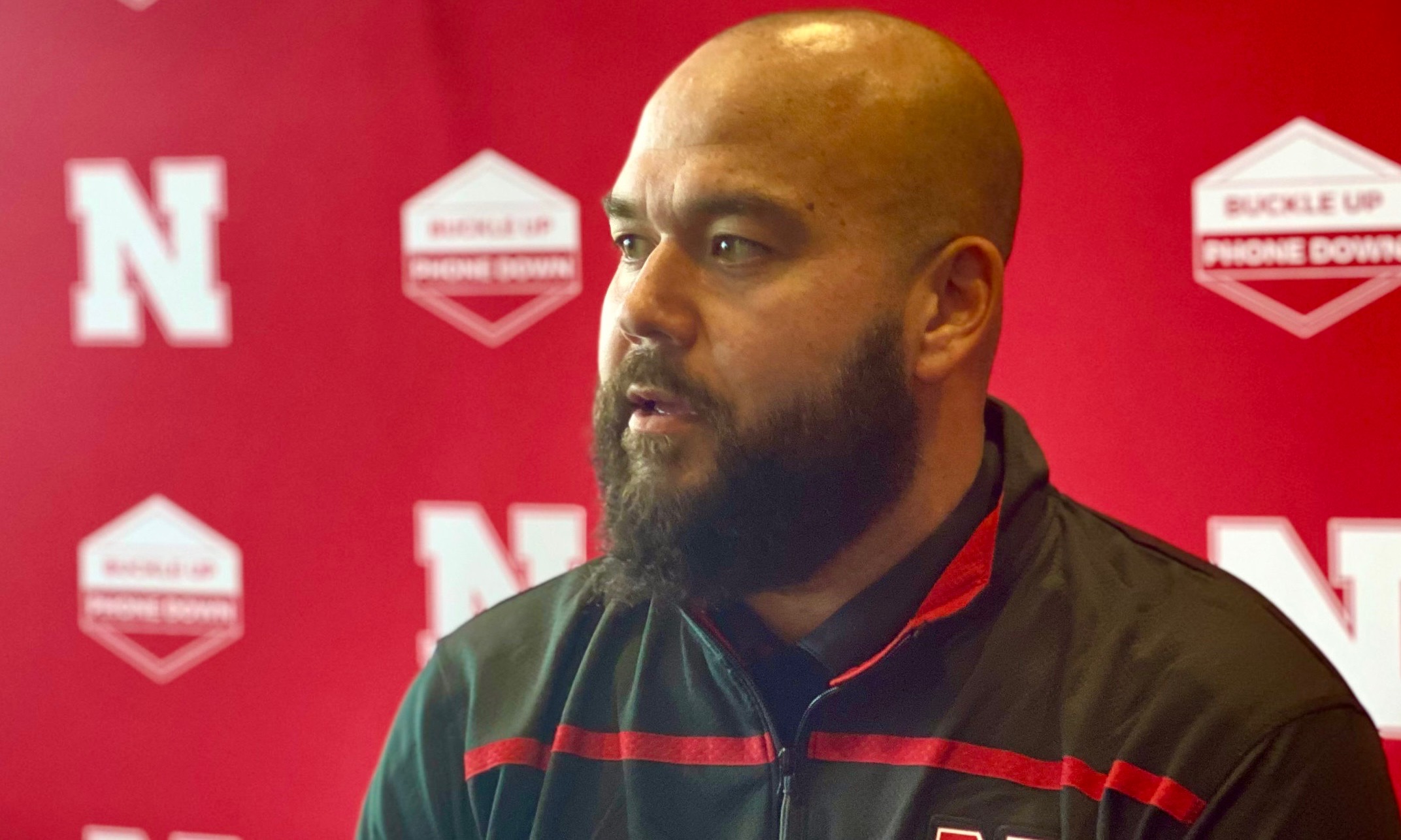
In this day and age of college football, I am repulsed and disgusted to learn that Donovan Raiola is pushing his players to the point where they vomit. There is simply no place for this style of coaching, especially when it’s directed towards 18 to 23 year old athletes. It’s unsafe, unnecessary, and could lead to serious repercussions.
The story was first reported by Sam McKewon of the Omaha World-Herald. McKewon wrote “Offensive line coach Donovan Raiola is coaching his position group intensely, Frost said. To the point that he estimates there are 15-20 vomits every practice from those linemen.”
When the topic was brought up, Coach Scott Frost gave a bizarre response to say the least.
“It’s not because they’re not in shape – he’s just working them hard,”.
While I understand the importance of getting your players prepped for the season, I don’t understand how vomiting correlates to success on the gridiron come October or November. It frankly baffles me. The fact that multiple players have died due to heatstroke over the past twenty years clearly hasn’t set an example to Frost or Raiola.
Heat Stroke Killed 58 Football Players Between 1980 And 2009
It may feel dramatic to say, but heat stroke is a real thing for football players. According to research from the University of Georgia, between 1980 and 2009, 58 football player lost their lives due to heatstroke. When you Google the symptoms of heatstroke or heat exhaustion, the fourth one on the list is “feeling sick or being sick”.
One of the players that died in the time frame was former Vikings offensive lineman, Korey Stringer. Stringer was 27 years old and going into his seventh season with the Vikings when he passed away on August 1, 2001. During the team’s first practice session on July 30th, 2001, Stringer was unable to finish due to fatigue. He did not participate in the team’s afternoon session either. The following day, Stringer completed the team’s morning session, which was in full pads. When the two and a half hour session concluded, Stringer went into the air conditioned locker room and began to feel ill and dizzy. It is reported that Stringer vomited three times (a symptom of heatstroke) and was then taken to Immanuel St. Joseph’s Hospital.
When the morning practice concluded, the heat index was reported at 99 degrees. When asked, Vikings offensive line coach noted that he did not see Stringer vomit. He also added he didn’t notice that Stringer seemed like he was suffering from heat stroke. At the hospital, Stringer was unconscious and his body temperature was 108 degrees. Stringer remained unconscious from the time he arrived to the time of his death at 1:50 a.m. on August 1, 2001.
Did We Learn Nothing From Jordan McNair?
Korey Stringer passed in 2001, but here is a more recent example of pushing athletes to an unsafe point. Jordan McNair was an offensive lineman for the Maryland Terrapins football team. The 6’4 pass protector committed to Maryland over Alabama, Duke, and Ohio State in 2017. In the summer of 2018, McNair was on campus for “voluntary” workouts. If you’re an athlete, you know that voluntary means “your ass better be there”. By NCAA rule, team coaches couldn’t be in attendance for these workouts, but a strength and conditioning coach could work with the athletes for eight hours a week. This left strength and conditioning coach Rick Court in charge. When McNair’s death occurred Michael Baumann of The Ringer described Court’s behavior as “bullying”.
On May 29, 2018, Maryland players ran 110 yard sprints that needed to be completed in under nineteen seconds. McNair completed the first seven. On the eighth one, trainers tended to him as he reported fatigue and cramping. Court wasn’t a fan of seeing McNair sit out of the sprints. A witness at the workout claimed that Court stated to the team “drag his ass across the field”. Twenty minutes later, McNair was taken into the facility to be examined by a team physician after his mental demeanor changed. When the physician dialed 9-1-1 moments later, McNair suffered a seizure. McNair was taken to Washington Adventist Hospital. His body temperature was recorded at 106 degrees. Following an ice bath at the hospital, McNair’s temp dropped to 102 degrees.
Later that night, McNair was airlifted to R Adams Cowley Shock Trauma Center for a liver transplant. He passed on June 13, 2018. His parents announced the cause of death to be heatstroke. Head coach D.J. Durkin and Court were both fired.

Could This Be Another Nail In Scott Frost’s Coffin?
Since taking over at his alma mater, Scott Frost has stunk as a head coach. Frost has a record of 15-29 and hasn’t finished higher than fifth in the BIG Ten West in four seasons. Now, you throw in something like this that puts a black eye on the program, it could lead to Frost being canned faster than expected. Personally, I think Frost should have been canned following a dismal 3-9 season last year, but he keeps getting opportunities. With the mention of players safety possibly being disregarded, this could push the hand of Nebraska Athletic Director, Dave Rimington, to fire Frost.
Do Better For College Athletes
I do not agree with Donovan Raiola’s coaching antics one bit. When you’re causing your players to vomit at practice and pushing them to their absolute max, things are bound to go wrong. Between March and May of 2022, five collegiate athletes took their lives. Sarah Shulze of Wisconsin, Katie Meyer from Stanford, Jayden Hill from Northern Michigan, Robert Martin of Binghamton, and Lauren Bernett from James Madison all took their lives. The stress a student athlete deals with at any level from D1 to JUCO is a lot. Throwing a 19 year old into intense academics, competitive athletics, and having them maneuver independence can weigh on them. It’s a difficult process.
When you’re making a 20 year old exert themselves to the point of vomiting, you’re not only hurting their body, you’re injuring their psyche. As a former college athlete, this is something I’ve seen in teammates and even myself. When you’re tired from practice and then pile academics on top of your fatigue, your mental health can take a serious hit. Student athletes need better support systems and to be treated better. These kids aren’t just cash cows for universities. They’re kids playing a sport.




